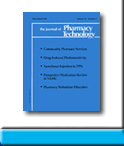 |
 |
PRESCRIPTION ASSISTANCE
FOR OLDER ADULTS WITH LIMITED INCOMES: CLIENT AND PROGRAM CHARACTERISTICS
Gina A Upchurch, Manoj P Menon, Kimberly S Levin,
Diane J Catellier,
and Elizabeth A Conlisk
To request full article click here.
OBJECTIVE: To describe the sociodemographic, medication-related, health services utilization and health characteristics of the community-dwelling senior citizens (>65 y) with limited incomes who enrolled in Senior PHARMAssist, a community-based prescription assistance program.
PATIENTS: Senior citizens (n = 387) enrolled in the program between June 1994 and May 1996. All eligible participants were 65 years of age or older, had incomes below 140% of the federal poverty level, but were not enrolled in Medicaid. All the patients were living in Durham County and were taking prescription medications.
MEASUREMENTS: Self- or caregiver-reported. In addition to demographic characteristics, polypharmacy (taking >5 prescription medications in the last month), medication adherence (adherence to directions on the medication container), medication knowledge (client or caregiver stated appropriate purpose for taking the medication), adverse effects from medications, and activities of daily living and instrumental activities of daily living limitations were measured.
RESULTS: Eighty percent of the senior citizens lived below the federal poverty level, 82% were women, 53% were African-American, 53% lived alone, and the mean monthly income for a single person was $595 and for a couple was $939. They were taking, on average, 8.9 medications, were adherent with 71% of their medications, knew the purpose of 69% of their medications, and reported adverse effects from 10% of their prescription medications.
CONCLUSIONS: This population of community-dwelling seniors takes, on average, a higher number of prescription medications than previously reported, posing a higher risk for the hazards associated with polypharmacy and uncoordinated prescribing, such as nonadherence, drug interactions, and adverse effects. There may be a greater need for future intervention programs to include a comprehensive educational component, such as a coordinated medication review, in addition to financial assistance.
J Pharm Technol 2001;17:6-12.
To request full article click here.
|
|
|
||
|

